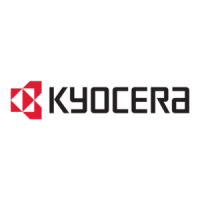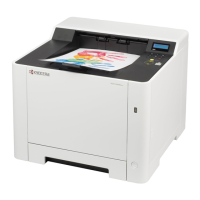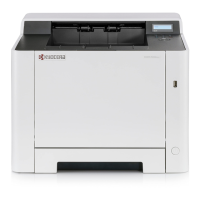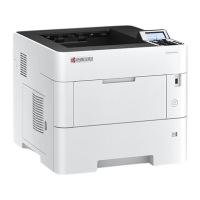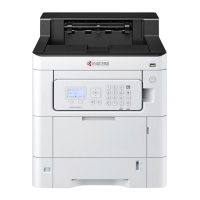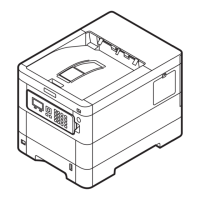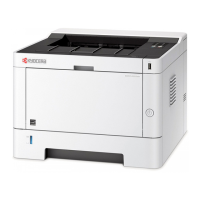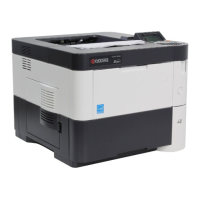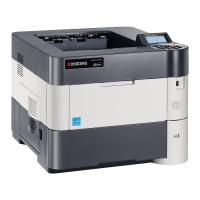3-5
Preparation
• Executive (7.25 × 10.5 inches)
• Envelope C5 (162 × 229 mm)
• Oficio II (8.5 × 13 inches)
• 216 × 340 mm
• 16 K (197 × 273 mm)
• Custom*
148 × 148 to 216 × 356 mm, 5.83 × 5.83 to 8.5 × 14 inches
* If the length of custom paper is larger than 297 mm (11.69 inches), the machine can be substituted A4, Folio,
Legal, and Oficio II as the standard paper size.
Smoothness
The paper should have a smooth, uncoated surface. Paper with a rough or sandy surface can cause blank spaces in the printed
output. Paper that is too smooth can cause multiple feeding and fogging problems. (Fogging is a gray background effect.)
Basis weight
Basis weight is the weight of paper expressed in grams per square meter (g/m²). Paper that is too heavy or too light may
cause feed errors or paper jams as well as premature wear of the product. Uneven weight of paper, namely uneven paper
thickness may cause multiple-sheet feeding or print quality problems such as blurring because of poor toner fusing.
The recommended basis weight is between 65 and 105 g/m² (17 to 28 lib/ream).
Paper Weight Equivalence Table
The paper weight is listed in pounds (lb) and metric grams per square meter (g/m²). The shaded part indicates the standard weight.
Thickness
The paper used with the machine should be neither extremely thick nor extremely thin. If you are having problems with
paper jams, multiple feeds, and faint printing, the paper you are using may be too thin. If you are having problems with
paper jams and blurred printing the paper may be too thick. The correct thickness is 0.086 to 0.110 mm (3.4 to 4.3 mils).
Moisture Content
Moisture content is defined as the percent ratio of moisture to the dry mass of the paper. Moisture can affect the paper’s
appearance, feed ability, curl, electrostatic properties, and toner fusing characteristics.
The moisture content of the paper varies with the relative humidity in the room. When the relative humidity is high and the
paper absorbs moisture, the paper edges expand, becoming wavy in appearance. When the relative humidity is low and
the paper loses moisture, the edges shrink and tighten, and print contrast may suffer.
Wavy or tight edges can cause jams and alignment anomalies. The moisture content of the paper should be 4 to 6%.
To ensure correct moisture content, it is important to store the paper in a controlled environment. Some tips on moisture
control are:
• Store paper in a cool, dry location.
• Keep the paper in its wrapping as long as possible. Re-wrap paper that is not in use.
• Store paper in its original carton. Place a pallet etc. under the carton to separate it from the floor.
• After removing paper from storage, let it stand in the same room as the machine for 48 hours before use.
Europe Metric Weight
(g/m²)
U. S. Bond Weight (lb)
65 17
74
19
75 20
90 21
91
24
105 28

